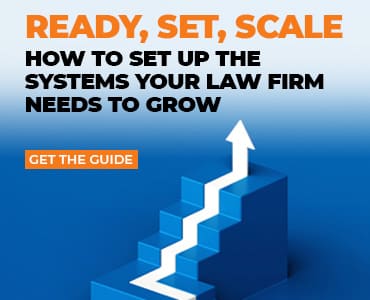In this classic from “The Coach,” Mike O’Horo: Smart advice on how to introduce yourself and get them talking!

Table of contents
Following a recent post about networking, a reader asked, “What’s the best way to introduce yourself at a networking event?” What follows is for business contexts. For social etiquette, I’ll defer to Emily Post (or my late mother, who, while my siblings and I were growing up, we considered one and the same).
A formal introduction should balance professionalism with personal traits to connect better with the audience. How to introduce yourself is determined by your purpose in attending the event. Most people adhere to the traditional networking philosophy (which I hope we’ve dissuaded you from embracing), so their purpose is simply to meet people, collect business cards, send a follow-up email and hope for the best.
But, I say your purpose is to filter the crowd to:
- Identify people who acknowledge experiencing a business problem that triggers demand for your service, and
- Who are willing to discuss that problem with you outside of the event, and
- Arrange that discussion.
Additionally, mentioning your professional background, including relevant skills and key roles, can enhance the professionalism and engagement of your introduction.
Understanding the Importance of Self-Introduction
Introducing yourself is a crucial aspect of making a good first impression, whether it’s in a professional setting, a job interview, or a social gathering. A well-crafted self-introduction can help you establish a positive and professional tone, making you more approachable and memorable to others. In a professional setting, your self-introduction can set the stage for meaningful conversations and potential opportunities. In a job interview, it can highlight your qualifications and enthusiasm for the role. And in social gatherings, it can help you connect with new people and build relationships.
Why a Good Self-Introduction Matters
A good self-introduction matters because it sets the tone for further conversation and can make a lasting impression on others. It’s an opportunity to showcase your personality, skills, and experience, and to demonstrate your enthusiasm and interest in the conversation or meeting. A good self-introduction can also help you build confidence and establish a connection with others. Whether you’re meeting someone for the first time or reintroducing yourself to a familiar face, a well-thought-out self-introduction can pave the way for a productive and engaging interaction.
Benefits of a Positive and Professional Tone
A positive and professional tone in your self-introduction can have several benefits, including:
- Establishing credibility and trust with others: A professional tone shows that you take the interaction seriously and respect the other person’s time and attention.
- Making a good first impression and setting the tone for further conversation: A positive tone can make you more approachable and encourage others to engage with you.
- Showcasing your personality and skills: A well-crafted self-introduction allows you to highlight your strengths and what makes you unique.
- Demonstrating your enthusiasm and interest in the conversation or meeting: Showing genuine interest can make the other person feel valued and more likely to continue the conversation.
- Building confidence and establishing a connection with others: A confident introduction can help you feel more at ease and create a positive atmosphere for further interaction.
A Lawyer Self introduction: Know Your Purpose — and Get Them Talking!
That means your goal is to have short qualifying conversations, tee up subsequent contact with those who qualify, quickly and graciously escape from those who don’t, and then hunt for the next suspect.
When you introduce yourself, state your job title and say the minimum about yourself, and quickly get the other person talking about themselves. This is easier than you might think since you have a fair amount to go on:
- You’re both wearing name tags, so you don’t have to announce your organization.
- Given their typical format (Surname, Surname & More Surnames), law firm names are often obvious, and the odds are pretty good that they’ll guess you’re a lawyer, so you don’t have to offer that.
- You’ve chosen the event because it’s attended by people whose circumstances make them likely to face your demand-triggering problem.

Crafting a Compelling Self-Introduction
Crafting a compelling self-introduction requires identifying your relevant skills and experience, and presenting them in a clear and concise manner. A good self-introduction should be tailored to the context of the conversation or meeting, highlighting what makes you a valuable and interesting person to talk to.
Identifying Your Relevant Skills and Experience
To identify your relevant skills and experience, consider the following:
- What are your key strengths and skills? Think about the abilities that set you apart and are most relevant to the context.
- What experience do you have that is relevant to the conversation or meeting? Highlight your background and achievements that align with the interests of the person you’re speaking to.
- What achievements and accomplishments are you most proud of? Share your successes to demonstrate your capabilities and build credibility.
- What sets you apart from others in your field or industry? Emphasize your unique qualities and experiences that make you stand out.
By identifying your relevant skills and experience, you can create a self-introduction that is tailored to the conversation or meeting, and that showcases your unique strengths and qualifications.
Here are some examples of self-introductions that incorporate relevant skills and experience:
- “Hello, I’m [Name], a corporate attorney specializing in mergers and acquisitions. I have experience with Fortune 500 company transactions.”
- “Good afternoon, I’m [Name], an intellectual property lawyer focusing on patent litigation. I have a background in electrical engineering and technical concepts. I communicate them to judges and juries, and get successful outcomes for my clients in high-stakes patent disputes.”
- “Hi there, I’m [Name], a family law attorney with experience in high-conflict divorce cases. I have training in mediation and collaborative law and I can help navigate emotionally charged situations. That helps minimizing the impact on any children involved.”
- “Pleased to meet you. I’m [Name], a criminal defense lawyer with 15 years of experience handling both state and federal cases. I have a track record of securing acquittals and favorable plea bargains and I’m good at building rapport with juries.”
Remember, the key to a compelling self-introduction is to be clear, concise, and relevant to the conversation or meeting. By identifying your relevant skills and experience, and presenting them in a positive and professional tone, you can make a lasting impression and establish a connection with others.
How to Introduce Yourself as a Lawyer—A Few More Self Introduction Examples
Let’s say you’re a trade secrets lawyer, and the problem that triggers demand for you is that of talent moving from one technology company to another, taking with them proprietary information stored in their brains. You know that the biotech industry is exploding and, therefore, faces acute shortages of engineers and salespeople. Companies are constantly recruiting each other’s talent, making it almost a certainty that they’re facing your problem now — or soon will.
To facilitate a smooth integration into a new team, scheduling a team meeting for new members to introduce themselves is essential.
A glance at a name tag tells you that Jane Seymour is VP of Sales at Integrated Biometrics. You offer a friendly, “Hi, Jane. Rachel Yates. Nice to meet you.” Because your name tag says you’re a Partner at Surname, Surname, and More Surnames, and a fair number of lawyers attend these events, she’s already figured out that you’re probably a lawyer. You immediately begin the qualifying process by asking Jane to talk about her company and herself.
- Rachel: “I’m not familiar with Integrated Biometrics, Jane. What kind of business is it?”
- Jane: “We’re an early-stage company that manufactures and sells biometric identification systems. You know, those touchpads that read your fingerprints to grant access to secure facilities like research labs, pharmaceutical companies, defense installations, and so forth.”
- Rachel: “Sounds exciting. I hear that’s really heating up as companies recognize the importance of securing access to sensitive areas of their facilities. I think I read something about a talent war in your business, with lots of poaching back and forth.”
- Jane: “You bet. Because this industry is relatively new, there’s an acute shortage of experienced engineering and sales talent. Competitors recruit from each other intensively.
- Rachel: “It seems like in hot categories like yours, those people moving between competitors take important knowledge with them.”
- Jane: “Absolutely. It’s in their heads, so even if they’re really high-integrity professionals who try to do the right thing, that knowledge has to show up in their future work, if only subconsciously. After all, that’s why our competitor hired them, and why we hire people from them.”
Jane has just confirmed that her company faces your demand-triggering problem.
- Rachel: “I see this all the time, so I understand. I’m a lawyer who helps tech companies protect their innovations and breakthroughs against the inevitable instances of key talent walking across the street to a competitor. There’s good news and bad news. The bad news is that there are more types of risk than generally recognized. The good news is that there are also more ways to protect the company than most people were aware of.”
- Jane: You said there were more types of risks than are generally recognized. What did you mean?
- Rachel: “In addition to the obvious risks, there are subtler ones that can impact the team’s success. Collaboration and contribution to achieve collective goals are crucial, and understanding these risks helps in safeguarding the team’s success.”
Success!
Jane wants to know more. It’s time to offer a short bit of categorical evidence that a solution exists, then make your exit. A well-crafted professional introduction is crucial in establishing strong professional relationships, and this is the perfect moment to demonstrate that.
- Rachel: “Well, the people you recruit have other companies’ secrets in their heads, too, right? And their former employers are watching your progress for signs of their trade secrets appearing in your products and marketing.”
- Jane: “I hadn’t thought of that side of it. So, what can an early-stage company like ours do?”
- Rachel: “I’m afraid there’s no 30-second answer, and I’ve tied you up long enough. Rather than monopolize your time here or discuss sensitive information in public, does it make sense for us to reconnect by phone sometime over the next few days?”
- Graciously, you won’t impose on Jane’s networking time, but you also don’t want to get trapped with one person all night, no matter how opportune it might seem. Jane doesn’t really want to get into any detail about sensitive topics in public rooms, so she’ll appreciate the suggestion.
Now, all Rachel has to do is arrange a date and time to chat (making sure that she’s initiating the call), and begin hunting for the next Jane.
How to Introduce Yourself: Timing is Everything
Why did Rachel delay declaring her value so long? Because unless Jane acknowledges having the talent-leaving-with-trade-secrets problem and demonstrates that it’s one she must care about, there’s no point. Unless there’s a specific reason to move forward, Jane isn’t likely to remember Rachel or anyone else she meets tonight.
Job seekers often feel immense pressure to create a strong first impression in professional settings, especially when aiming for their dream job.
How many times have you arrived at your office the next day, looked at the business cards you picked up the night before and struggled to remember anything about any of those people?
You Might Also Like Further Conversation …
Read past “Well Said” columns by Mike O’Horo to polish your sales skills:
Illustration ©iStockPhoto.com
















